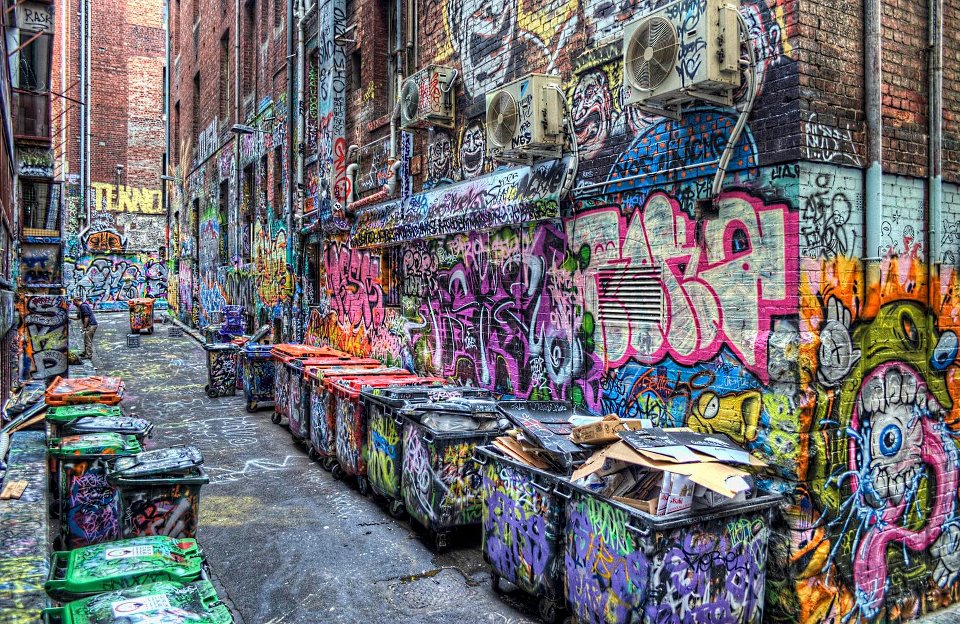When looking
for an instructional resource I found a piece called "Street Art" by Sweeny and
within the work itself he mentioned another instructional resource by Aguilar.
So I decided to draw ideas from both pieces. They were both on the relevance of
street art more commonly known as Graffiti.
Graffiti is a sort of taboo for teaching in
classrooms; many would question the ethical justification behind such actions.
However, I believe graffiti is truly necessary because the art form is a part
of our cultural and aids in a true understanding of reactionary art. In Street
Art by Sweeny Robert states that “it is the challenging nature of street art
that makes it a relevant topic for discussion in the spaces of art education” While
yes, the art form does need to be taught in conjunction with the dangers and
illegality of such practices there are also communities of street artists who
have permission to create on certain walls. “Whenever a graffiti artist obtained permission from a property owner,
the artist inherently become the curator for who else would paint there and how
often installations rotated on that wall.” There is a true
community with the street art world, while it may seem disjointed and
scattered, there is an unspoken rule book of street art that guides each artist
in where he creates and when.
The
relevance of this art form in the classroom is the reactionary nature of the
art. While there are heavy amounts of planning that go into a single piece,
once there the artist must deal with the uneven canvas, unpredictable weather,
and interference from onlookers; these are the reasons why I believe street art
as a form is so in the demand right now. Sweeny makes specific note of an
infamous street artist name Banksy. Banksy is one of the most well-known yet
unknown artists in the profession. No one ever seems to catch him in the act
and all we know of his work are websites that find his work around New York
City. His pieces will sometimes go for upwards of millions due to their
expressive style and major political statements they make. Entire walls of
buildings have been removed so that they can be sold with Banksy’s work on
them. Sweeny shows the more political side of street art referencing “Slave Labor,”
a piece by Banksy confronting the child labor laws; before this particular
topic Banksy made statement about the brutality or inefficiency of law
enforcement.
 Sweeny
also talks about the darker side of Street art referencing visual essays made
by contemporary street artists on the dangers of street art in the city,
Montreal in particular. These visual essays shine light on the dangers of
illegally tagging. Illegal street artist are not only in danger from the law
but also rival street artists and gangs within the city. It truly shows how
much this group of people is willing to sacrifice for their art. As a result
their tags or pieces are some of the most reactionary, taking place in mere
minutes to avoid detection.
Sweeny
also talks about the darker side of Street art referencing visual essays made
by contemporary street artists on the dangers of street art in the city,
Montreal in particular. These visual essays shine light on the dangers of
illegally tagging. Illegal street artist are not only in danger from the law
but also rival street artists and gangs within the city. It truly shows how
much this group of people is willing to sacrifice for their art. As a result
their tags or pieces are some of the most reactionary, taking place in mere
minutes to avoid detection.
You are
probably wondering how all of this would fit into a classroom setting. I feel
it would not only teach about reactionary art but pose some interesting
questions on the ownership of these pieces and the cultural significance they
hold. As for actual projects in response to this material, I believe students
would gain a better understanding of the concept if they were to create a reactionary
piece themselves.
References
Aguilar, M. (2013). Half
a life painting walls: The trajectory of graffiti artist miguel "kane
one" aguilar. Art
Education, 66(5), 34-38. Retrieved from http://search.proquest.com/docview/1437171824?accountid=13158
BBC. (2013, February
18). Banksy mural vanishes from London, appears at US auction. BBC News.
Retrieved from: www.bbc.co.uk/news/ entertainment-arts-21497261
Sweeny, R. (2013). SREET
art. Art
Education, 66(5), 4-5. Retrieved from
http://search.proquest.com/docview/1437171918?accountid=13158



Banksy is more than one person.
ReplyDelete